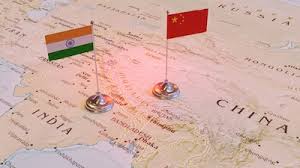NEW DELHI: Indian and Chinese troops have started the process of disengagement and also begun removing “man-made” blockades on the patrolling routes at Depsang and Demchok along the Line of Actual Control (LAC) in eastern Ladakh.
Earlier, India had announced a “patrolling arrangement” with China. The final agreement to pull back the troops was inked at the level of the Corps Commanders on Monday.
After the BRCIS summit at Kazan, Russia, on Wednesday, Foreign Secretary Vikram Misri, while talking about the patrolling arrangement, had said, “A path has opened after the agreement, now the need is to walk on it.”
According to the agreement, shepherds would be allowed to graze their livestock in the areas where the two countries have overlapping claims at the LAC. However, both sides would coordinate it.
The process to remove structures started at Depsang yesterday while it began at Demchok today. This will entail removing all temporary structures, cameras and vehicles.
Once this is done, it will open the route for Indian troops to patrol at points 10, 11, 12 and 13. These are the routes going east-wards of the “bottleneck” a geographical feature on the 972-sq km Depsang plateau in east Ladakh. The second is the buildup at Charding La nullah (also termed as Demchok nullah). The Chinese approach the Charding La a 19,120-foot-high pass from its southern approach. The peak is on the LAC and is patrolled by the Indian Army along the nullah.
The Chinese army also uses the route. Sources said according to agreement, patrolling would be carried out in all areas as was done before 2020.
The two sides would have a patrolling schedule to avoid clashes and the patrol strength would not exceed 20 men, said the sources.


